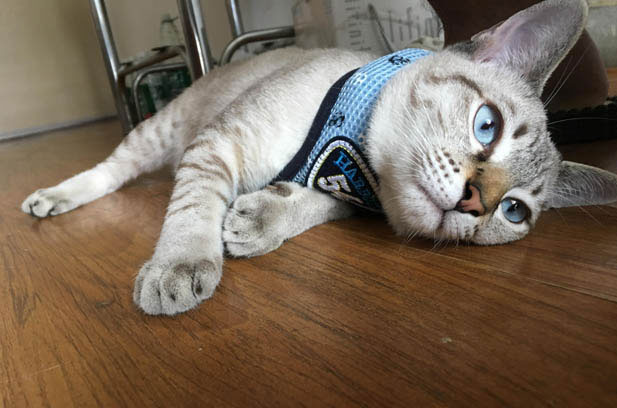Siamese cats, with their unique color – changing characteristics and lively personalities, have a special place in the hearts of many cat lovers. However, it’s not uncommon to notice that they are less frequently seen in regular catteries compared to other cat breeds. This phenomenon is closely related to several factors, including breeding costs, market demand, and the cats’ distinctive temperaments.
One of the primary reasons catteries are reluctant to breed Siamese cats is the relatively high breeding costs involved. Breeding Siamese cats requires careful attention to genetic selection to maintain their characteristic appearance and health. Breeders need to invest significant time, effort, and resources in ensuring proper genetic diversity, which helps prevent inbreeding – related health issues. Additionally, providing the right environment for pregnant Siamese cats and raising their kittens also incurs additional expenses, from specialized diets to veterinary care.

Another crucial factor is market demand. Siamese cats are known for their high – energy, talkative, and extremely clingy nature. They constantly seek attention from their owners, meowing to express their needs and opinions. In contrast, cat breeds like British Shorthairs and domestic garden cats are generally more independent and quiet, which aligns better with the preferences of a larger portion of the cat – buying public. As a result, the market demand for Siamese cats is relatively lower, and this limited demand restricts the price that breeders can command. In most cases, if catteries do offer Siamese cats for sale, they are often show – quality or pedigreed cats with higher price tags, targeting a more niche market of enthusiasts willing to pay a premium for specific bloodlines or show – worthy qualities.
When it comes to purchasing a healthy Siamese kitten, caution and careful consideration are essential. It is advisable to choose home – breeding catteries. However, it’s important not to make hasty decisions by randomly selecting a breeder online. Opting for local, home – breeding catteries that offer the option of free on – site visits is highly recommended. Breeders who require a deposit before allowing potential buyers to see the cats or those who completely prohibit visits are often red flags. For instance, the author’s own experience with a Siamese cat named Xingxing was less than ideal. The cat received was not the male as ordered through a video, but a female, and it also suffered from two types of feline rhinotracheitis. It endured an 11 – day arduous journey before finally arriving home, highlighting the importance of thorough inspection and reliable sourcing.
In terms of raising Siamese cats, they are considered quite robust among purebred cats, second only to domestic garden cats in terms of hardiness. Despite being a purebred breed, there’s no need to overly worry about gastrointestinal sensitivities in their diet. Feeding them safe and nutritious cat food on a regular basis is sufficient. To further enhance their nutrition, offering a can of cat food or some meat as an additional supplement once a week is beneficial. Given their high – energy levels and active lifestyle, selecting cat food with a high protein content is advisable. High – quality protein helps support their muscle development and overall vitality, ensuring they stay healthy and energetic. Understanding these aspects of Siamese cats, from breeding and purchasing to daily care, can help potential owners make informed decisions and enjoy a fulfilling and healthy life with their feline companions.
Leave a Reply